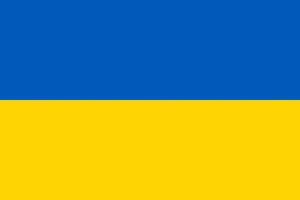Language/Ukrainian/Culture/Traditional-Dishes
As a Ukrainian language teacher, I cannot ignore one of the most fascinating aspects of our culture and identity: our cuisine. Food, its preparation, and its consumption are a significant part of our lives, and traditional dishes are an essential aspect of Ukrainian culture. In this lesson, we will learn about some of the most popular Ukrainian dishes, including their ingredients, preparation, and cultural significance.
Borscht
Let's start with Ukraine's most famous dish, borscht, which is also a staple in many other Eastern European cuisines. It is a hearty soup that combines a variety of vegetables, including beets, cabbage, and potatoes, and can be served with sour cream and dill. The word "borscht" comes from the Slavic word for "beet," which is "borshch."
Here is a table that shows the Ukrainian pronunciation and English translation of some of the ingredients used in borscht:
| Ukrainian | Pronunciation | English |
|---|---|---|
| свекла | svyekla | beetroot |
| капуста | kapusta | cabbage |
| картопля | kartoplya | potatoes |
| морква | morkva | carrots |
| цибуля | tsi'bulya | onion |
| часник | chasnyk | garlic |
| сметана | smetana | sour cream |
Borscht has been a part of Ukrainian cuisine for centuries and was a staple dish for Ukrainian peasants. In fact, borscht is so ingrained in Ukrainian culture that it has become a symbol of Ukrainian identity. For example, during the Euromaidan protests in Ukraine in 2014, protesters carried signs that read, "Get out, borscht-eater!" as a way of expressing their patriotism and desire for Ukraine to remain independent from Russia.
Varenyky
Varenyky is another traditional Ukrainian dish that is popular in other Eastern European countries, such as Poland and Russia. They are boiled dumplings that are filled with various ingredients, such as mashed potatoes, cheese, sauerkraut or cabbage, mushrooms, or meat. Varenyky are usually served with sour cream or butter and can be served either as a main dish or a side dish.
Here is a table that shows the Ukrainian pronunciation and English translation of some of the typical varenyky fillings:
| Ukrainian | Pronunciation | English |
|---|---|---|
| картопля | kartoplya | mashed potatoes |
| сир | syr | cheese |
| капуста | kapusta | sauerkraut / cabbage |
| гриби | hryby | mushrooms |
| м'ясо | m'yaso | meat |
Like borscht, varenyky has a long history in Ukrainian cuisine and is closely associated with Ukrainian culture. In fact, there is a popular saying in Ukraine that states, "As many Ukrainians, that many types of varenyky." It is a testament to the diverse and unique nature of Ukrainian cuisine.
Holubtsi
Holubtsi (also known as golubtsi) is a dish made of stuffed cabbage rolls that are typically filled with minced meat, rice, and chopped vegetables such as onions and carrots. The rolls are then baked or boiled and usually served with sour cream. Holubtsi are a popular dish for special occasions, such as weddings and holidays.
Here is a table that shows the Ukrainian pronunciation and English translation of some of the ingredients used in holubtsi:
| Ukrainian | Pronunciation | English |
|---|---|---|
| капуста | kapusta | cabbage |
| крупа | krupa | rice |
| м'ясо | m'yaso | meat |
| цибуля | tsi'bulya | onion |
| морква | morkva | carrot |
Holubtsi are an excellent example of Ukrainian cuisine's simplicity and practicality. The dish was a popular choice for peasants, who had plenty of cabbage to use and could stuff the rolls with whatever ingredients they had available.
Conclusion
Traditional Ukrainian dishes such as borscht, varenyky, and holubtsi are an integral part of Ukrainian culture and identity. They are a testament to the country's rich history and deep-rooted traditions. By learning about these dishes, you not only gain insights into Ukrainian cuisine but also into Ukrainian culture and its significance. I hope you enjoyed this lesson and have a newfound appreciation for Ukrainian cuisine. Follow my advice on how to prepare these traditional Ukrainian dishes, and you will be amazed by how good they taste!

